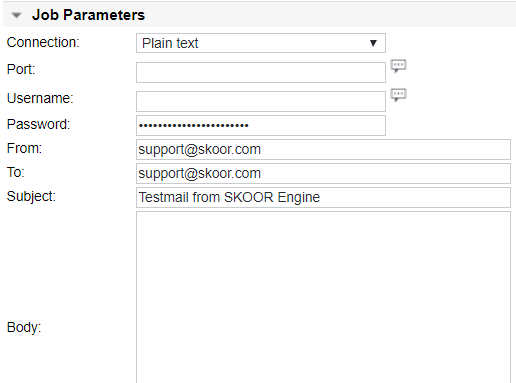SMTP
Function | Test an SMTP server by session initiation or by sending mail |
|---|---|
Alarming | Connection time, Transfer time, Sequence code, Response code |
A process can transfer mail to another process on the same network or to some other network via a relay or gateway process accessible to both networks.
Session Initiation
An SMTP session is initiated when a client opens a connection to a server and the server responds with an opening message. SMTP server implementations MAY include identification of their software and version information in the connection greeting reply after the 220 code, a practice that permits more efficient isolation and repair of problems. Implementations MAY make provision for SMTP servers to disable the software and version announcement where it causes security concerns.
Client initiation
Once the server has sent the welcome message and the client has received it, the client normally sends the HELO command to the server, indicating the client's identity.
Mail transaction
There are three steps to SMTP mail transactions. The transaction starts with a MAIL command which gives the sender identification. A series of one or more RCPT commands follows, containing the receiver information. Then a DATA command initiates transfer of the mail data and is terminated by the "end of mail" data indicator, which also confirms the transaction.
SMTP detail
SMTP parameters
Parameter | Description |
|---|---|
Connection | Define connection type, chose between Plain Text, STARTTLS or SSL/TLS |
Port | The port to connect to. The default SMTP port for plain text and STARTTLS is 25, for SSL/TLS it is 465. |
Username/Password | The login details for authentication against the mail server (may be left empty if no login is required) |
From | Sender email address |
To | Receiver email address (no mail is sent if left empty) |
Subject | Email subject text |
Body | Email body text (sent as html) |
SMTP values and alarm limits
Value / Alarm limit | Description |
|---|---|
Connection time | Time to connect to the remote seerver (in ms) |
Login time | Time to login to the remote server (in ms) |
Response code | 0 = Ok |
Error code | Generic job error code (see section Job error codes) |
SMTP examples
Example 1 - Send an email
The same parameters as in the screenshot above are used. The email is sent when the job is executed.

